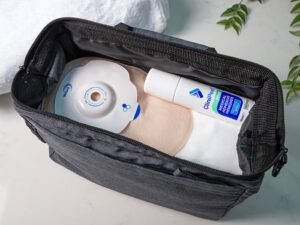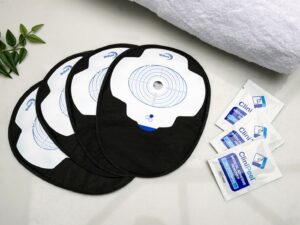Self-catheterisation, also called intermittent self-catheterisation (ISC), is a safe and effective way to help empty your bladder when it isn’t working as it should. Discover helpful tips for living with ISC, along with answers to common questions and concerns. Your healthcare professional will walk you through the different catheter options, and this guide is here to help you review those choices while providing more details about our Curan catheters.
What is self-catheterisation?
Intermittent Self-Catheterisation (ISC) is a method of draining urine out of the bladder. ISC works by allowing urine to flow out of the bladder through a catheter that is temporarily inserted through the urethra. ISCs are mainly designed for single use, meaning a new one is used each time you need to empty your bladder.
Intermittent catheters are used when the bladder does not empty completely on its own, this could be due to conditions like urinary retention, after surgery or in some types of incontinence.
What's the difference?
Indwelling and intermittent catheters
An indwelling catheter (also known as a Foley catheter) is designed to stay in the bladder all the time. It is held in place with an inflated balloon and is connected to a drainage bag or catheter valve. ISC on the other hand is temporary, it is used when needed and removed.
Patients who self-catheterise have a lower risk of urinary tract infections (UTIs) and can manage their condition independently, making it an attractive option.
View the video transcript +–
So an indwelling catheter, also known as a Foley catheter, is designed to stay in place for longer and this can be inserted through the urethra or the abdominal wall.
These are held in place with a balloon which I’ll show you, and we blow this up with some sterile water and that can stay in for a number of weeks.
So this is an intermittent self catheter, also known as an ISC. This is something that the patient would manage themselves and would be used to drain the bladder however many times a day is appropriate determining on the condition that you have.
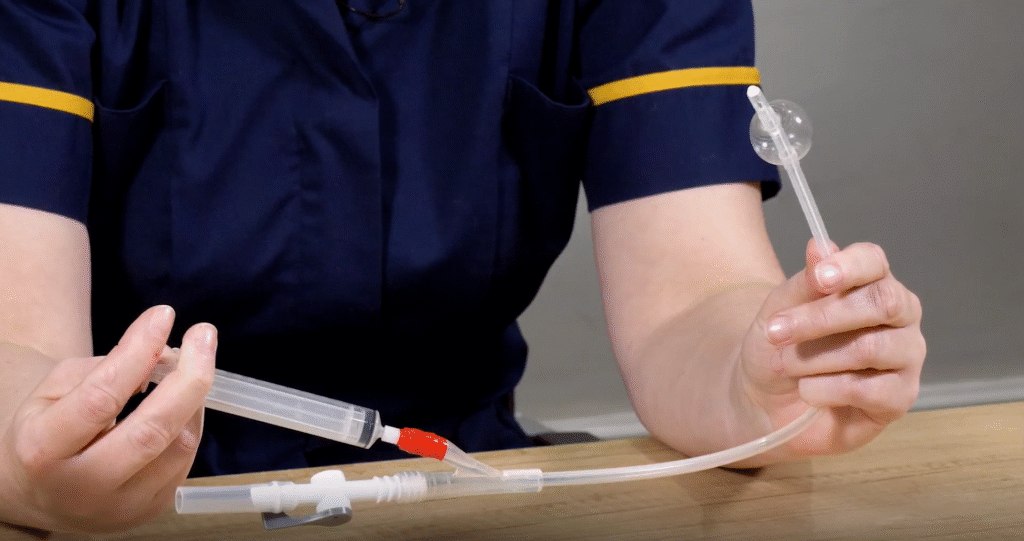
Types of intermittent catheters
When it comes to Intermittent Self-Catheterisation (ISC), there isn’t just one type of catheter – there are different options to suit people’s individual needs. Two of the most common types are hydrophilic catheters and gel catheters.
Hydrophilic catheters have a special surface that becomes slippery when activated by water. Some are ready to use straight from the packet, while others come with a small burstable water sachet inside the packaging to activate the coating.
Gel catheters, on the other hand, are pre-lubricated with gel, making them smooth and ready to insert without any extra preparation. One positive aspect of gel catheters is their compact, discreet nature, making them ideal for travelling.
View the video transcript +–
A question I’m often asked is what are the different types of catheters?
With intermittent self catheters there are two different options available. One is a water-based catheter which we refer to as hydrophilic and these may have a water sachet within the packet that needs to be burst to activate the coating or they may already be pre lubricated ready to use.
Then the other option is a gel catheter and these are pre lubricated and the gel option may make it smoother and reduce friction when inserting the catheter.
So when you have your appointment with your healthcare professional, it’s important that you’re offered a choice in order that you find a catheter that’s comfortable for you and this will help you keep up with your regime of catheterising.
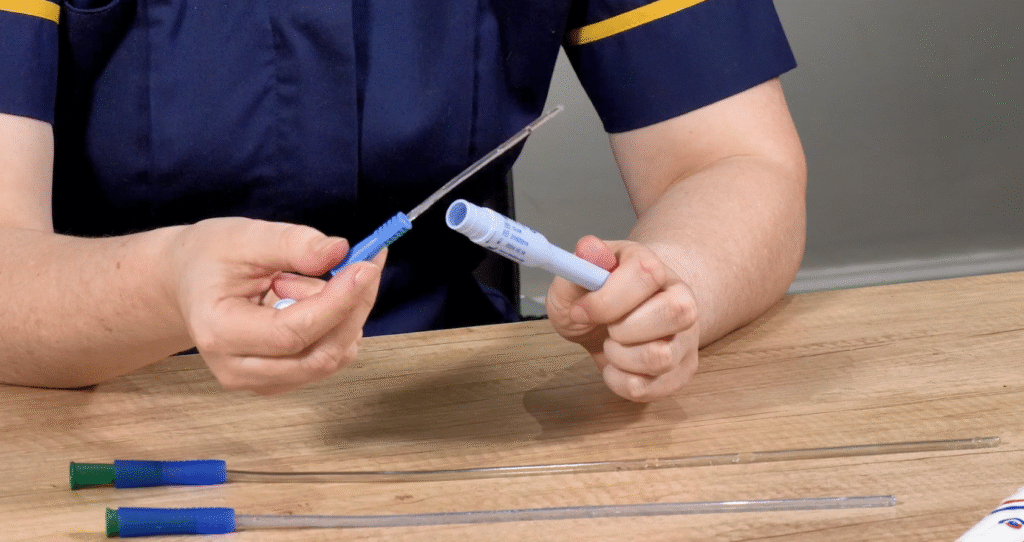
Choosing the right catheter length
When choosing a catheter, it should be slightly longer than the urethra – the male urethra is around 15–20cm and a female is around 3–4cm.
Catheters have a unique sizing metric called ‘CH‘ (also known as Charrière or French Gauge) which can making sizing confusing. Our Curan catheters come in a variety of sizes raging from CH 08–CH 16.
Choosing the right diameter is important to ensure that your catheter works as it should, an incorrect size can make make insertion difficult. A smaller size is best to reduce the risk of urethral damage.
As well as being designed in various sizes, catheters can also be designed with different tips. The Tiemann (or coudé) tip has a soft-curved design to help make insertion easier for men with an enlarged prostate.
If you need help finding the right catheter, your healthcare professional can help you find not only the most suitable length but also the tip that works best for you.
CH sizing – 1 CH is equal to 0.33mm in diameter.
Benefits of ISC
Discreet
Catheters are usually designed in a compact way to be carried around discreetly without drawing any attention.
Creates independence
The user-friendly, self-managed aspects of ISC allow people to manage independently.
Comfortable
With most catheters being pre-lubricated in some way, insertion and removal is low-friction, minimising discomfort.
Unsure what catheter to use?
Tips for managing ISC
Self-catheterising soon becomes part of your normal routine. A few simple habits can help make it easier and more comfortable day to day:
Create a schedule – Make catheterising a regular practice at intervals recommended by your healthcare professional. You can use reminders and alarms to maintain your schedule.
Be prepared – When leaving the house, take catheters and the supplies you need to self-catheterise so you are fully prepared wherever you are.
Plan for travel: If you’re leaving the country, print off our travel certificate to eliminating the need for you to try and explain your condition.
Stay hydrated and healthy: Drinking enough fluids helps flush the bladder, reducing the risk of infection and blockages.

Featured products
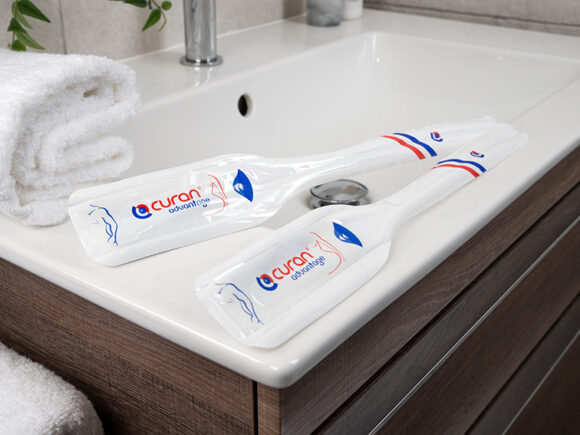
Curan® Advantage Hydrophilic Catheter
Experience smooth, low-friction catheterisation with ComfortCoat® hydrophilic coating that ensures lasting lubrication from insertion to removal.
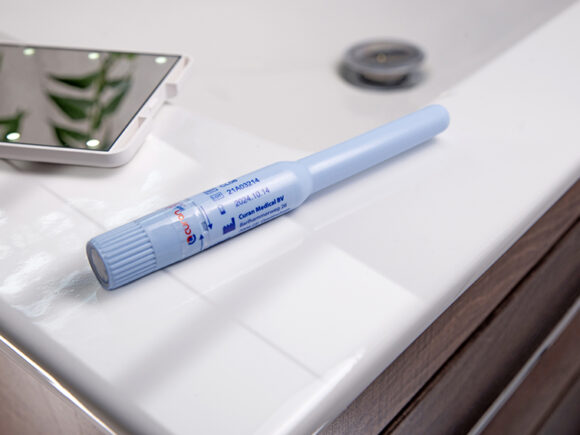
Curan® Gel Catheter
Curan Gel intermittent catheters have a compact design and protective casing make them the ideal travel companion. Their hydrogel coating ensures smooth and comfortable insertion and removal.
Continence support and resources
Find lots of helpful tips for living with incontinence in our resource library.

How to Self-Catheterise
Learn how to self-catheterise safely and comfortably with this step-by step guide.

Nutrition Guide for Continence Patients
Written with dietitian Ruth Kander, this guide offers advice on what to include and avoid in your diet to support bladder health, reduce irritation, and manage incontinence.

Continence Hydration Guide
This guide created by healthcare specialists, offers practical tips, a daily fluid intake tracker, and a sample menu to help you stay on top of your hydration needs.

Urinary Incontinence Catheter Care Guide
This guide contains advice on living with a catheter, including helpful tips, solutions to common challenges and how to gain confidence.
Frequently asked questions
ISC shouldn’t be painful. You may experience a bit of discomfort when you start catheterising but this will become more comfortable with practice. Using the right technique to self-catheterise and a correctly sized catheter help to make the process pain-free.
When you meet your healthcare professional for the first time, they will discuss all the catheter options available to you. What you should use will depend on your lifestyle, your reason for catheterising, your mobility, dexterity and other factors.
Follow the schedule your healthcare professional recommends, this is different for everyone, depending on individual needs.
Don’t force it. Take a moment, try to relax, and try again. If you still struggle, view our guide on how to self-catheterise or contact your healthcare team.
A small trace can happen occasionally, but if it continues or is heavy, seek medical advice.
Yes, you can have sex with an intermittent self catheter. One tip suggested by Louise Harrison, our Community Nurse Specialist, is to empty your bladder before you have sex.
If you have pain, fever, ongoing blood in your urine, difficulty passing the catheter, or signs of infection, get medical support.
